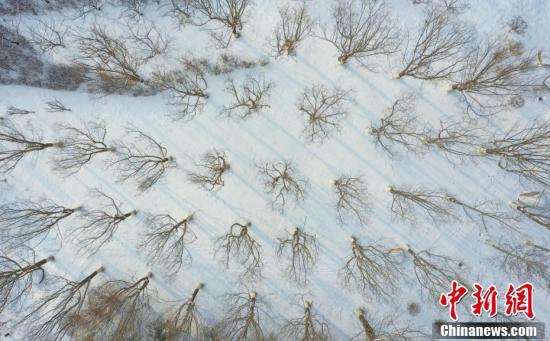同行1800多公里,跟着货车司机跑长途(人民眼·货车司机
图①:山西临汾经济技术开发区兴荣供应链有限公司的货车整装待发。资料图片 图②:司机王勇平驾驶货车行驶在

2023年新高考全国Ⅱ卷英语真题
英语听力
第一节(共5小题;每小题1.5分,满分7.5分)
 (资料图片仅供参考)
(资料图片仅供参考)
听下面5段对话。每段对话后有一个小题, 从题中所给的A、B、C三个选项中选出最佳选项。听完每段对话后, 你都有10秒钟的时间来回答有关小题和阅读下一小题。每段对话仅读一遍。
例: How much isthe shirt?
A.£19.15. B.£9.18. C. £9.15.
答案是C。
1.What will Jack probably do this weekend?
A. Gocamping. B. Visit afriend. C. Watch a film.
2.What does the woman ask the man to do?
A.Take care of her bags. B. Packthe food for her. C. Check thetrain schedule.
3.When will the man see Bob?
A.This Friday. B. ThisSaturday. C. Next Monday.
4.Why does the man apologize?
A.For the terrible food. B. Forthe overcharge. C. For thewaiter’s rudeness.
5.What are the speakers talking about?
A.Writing a book. B. Holding acelebration. C. Buying apresent.
第二节(共15小题;每小题1.5分,满分22.5分)
听第6段材料, 回答第6、7题。
6.Why does Sara make the phone call?
A. Toask for advice. B. To arrangean outing. C. To cancel anappointment.
7.What does David want to do?
A. Goto a dinner party. B. Talk toSara in person. C. Work on thenew case.
听第7段材料, 回答第8、9题。
8.Where is Jim now?
A. Ina taxi. B. On abus. C. In his office.
9.What is the woman’s suggestion?
A.Going to the city center. B.Taking a short cut home. C.Meeting Jim in the park.
听第8段材料, 回答第10至13题。
10.What did Clara do at the weekend?
A.She planted vegetables. B. Shewent to a yard sale. C. Shevisited her grandpa.
11.What did Mark find inside one of the books he bought?
A. Aplane ticket. B. A familyphoto. C. A post card.
12.Where does Mark live?
A.Los Angeles. B.Chicago. C. Philadelphia.
13.What is the relationship between Mark and Ashley?
A.Brother and sister. B. Husbandand wife. C. Father anddaughter.
听第9段材料, 回答第14至17题。
14.What is probably the woman?
A. Ateacher. B. Ajournalist. C. An athlete.
15.What does Victor find difficult as a member of the basketball team?
A.Adapting himself to the intense training.
B.Dealing with the pressure from the coach.
C.Regaining the skills learned in high school.
16.What does Victor say about the players on the team?
A.They are of the same age.
B.They are similar in character.
C.They are from different countries.
17.How does Victor feel about his team now?
A.It’s about to break up. B. It’sthe best in Indiana. C. It’sgetting stronger.
听第10段材料, 回答第18至20题。
18.Who is Tom Hokinson?
A.Founder of a magazine. B.Publisher of a novel. C. Editorof a newspaper.
19.What do we know about the content of The Idler?
A.It’s old-fashioned. B. It’swide-ranging. C. It’sstudent-targeted.
20.Why does the speaker give the talk?
A. Todo a promotion. B. To discuss anissue. C. To introduce alecturer.
第一节(共15小题;每小题2.5分,满分37.5分)
阅读下列短文, 从每题所给的A、B、C、D四个选项中选出最佳选项。
A
YellowstoneNational Park offers a variety of ranger programs throughout the park, and throughoutthe year. The following are descriptions of the ranger programs this summer.
ExperiencingWildlife in Yellowstone(May26 to September 2)
Whetheryou’re hiking a backcountry trail(小径), camping, or just enjoying the park’s amazingwildlife from the road, this quick workshop is for you and your family. Learnwhere to look for animals and how to safely enjoy your wildlife watchingexperience. Meet at the Canyon Village Store.
JuniorRanger Wildlife Olympics(June5 to August 21)
Kidscan test their skills and compare their abilities to the animals of Yellowstone.Stay for as little or as long as your plans allow. Meet in front of the VisitorEducation Center.
CanyonTalks at Artist Point(June9 to September 2)
Froma classic viewpoint, enjoy Lower Falls, the Yellowstone River, and thebreathtaking colors of the canyon(峡谷)while learning about the area’s natural and humanhistory. Discover why artists and photographers continue to be drawn to thisspecial place. Meet on the lower platform at Artist Point on the South RimDrive for this short talk.
PhotographyWorkshops(June19& July 10)
Enhanceyour photography skills—joinYellowstone’s park photographer for a hands-on program to inspire new andcreative ways of enjoying the beauty and wonder of Yellowstone.
6/19-Waterfalls&Wide Angles: meet at Artist Point.
7/10-Wildflowers&White Balance: meet at Washburn Trailhead in Chittenden parking area.
21.Which of the four programs begins the earliest?
A.PhotographyWorkshops. B.Junior Ranger Wildlife Olympics.
C.Canyon Talks at Artist Point.D. Experiencing Wildlife in Yellowstone.
22.What is the short talk at Artist Point about?
A.Works of famous artists.B. Protection of wild animals.
C.Basic photography skills. D.History of the canyon area.
23.Where will the participants meet for the July 10 photography workshop?
A.ArtistPoint.B. Washburn Trailhead.
C.Canyon Village Store. D.Visitor Education Center.
B
Turningsoil, pulling weeds, and harvesting cabbage sound like tough work for middle andhigh school kids. And at first it is, says Abby Jaramillo, who with anotherteacher started Urban Sprouts, a school garden program at four low-incomeschools. The program aims to help students develop science skills,environmental awareness, and healthy lifestyles.
Jaramillo’sstudents live in neighborhoods where fresh food and green space are not easy tofind and fast food restaurants outnumber grocery stores. "The kidsliterally come to school with bags of snacks and large bottles of softdrinks," she says. "They come to us thinking vegetables are awful,dirt is awful, insects are awful." Though some are initially scared of theinsects and turned off by the dirt, most are eager to try something new.
UrbanSprouts’ classes, at two middle schools and two high schools, include hands-on experimentssuch as soil testing, flower-and-seed dissection, tastings of fresh or driedproduce, and work in the garden. Several times a year, students cook thevegetables they grow, and they occasionally make salads for their entireschools.
Programevaluations show that kids eat more vegetables as a result of the classes."We have students who say they went home and talked to their parents andnow they’re eating differently," Jaramillo says.
Sheadds that the program’s benefits go beyond nutrition. Some students get sointerested in gardening that they bring home seeds to start their own vegetablegardens. Besides, working in the garden seems to have a calming effect onJaramillo’s special education students, many of whom have emotional controlissues. "They get outside," she says, "and they feelsuccessful."
24.What do we know about Abby Jaramillo?
A.She used to be a health worker.B. She grew up in a low-income family.
C.She owns a fast foodrestaurant. D. She is aninitiator of Urban Sprouts.
25.What was a problem facing Jaramillo at the start of the program?
A.The kids’ parents distrustedher. B. Students hadlittle time for her classes.
C.Some kids disliked garden work.D. There was no space for school gardens.
26.Which of the following best describes the impact of the program?
A.Far-reaching. B.Predictable. C.Short-lived. D. Unidentifiable.
27.What can be a suitable title for the text?
A.Rescuing School GardensB. Experiencing Country Life
C.Growing Vegetable Lovers D.Changing Local Landscape
C
ReadingArt: Art for Book Lovers is a celebration of an everydayobject-the book, represented here in almost three hundred artworks from museumsaround the world. The image of the reader appears throughout history, in artmade long before books as we now know them came into being. In artists’ representationsof books and reading, we see moments of shared humanity that go beyond cultureand time.
Inthis "book of books,” artworks are selected and arranged in a way thatemphasizes these connections between different eras and cultures. We see scenesof children learning to read at home or at school, with the book as a focus forrelations between the generations. Adults are portrayed(描绘)alone in many settingsand poses—absorbedin a volume, deep in thought or lost in a moment of leisure. These scenes mayhave been painted hundreds of years ago, but they record moments we can all relateto.
Booksthemselves may be used symbolically in paintings to demonstrate the intellect(才智), wealth orfaith of the subject. Before the wide use of the printing press, books weretreasured objects and could be works of art in their own right. More recently,as books have become inexpensive or even throwaway, artists have used them asthe raw material for artworks-transforming covers, pages or even completevolumes into paintings and sculptures.
Continueddevelopments in communication technologies were once believed to make theprinted page outdated. From a 21st-century point of view, the printed book iscertainly ancient, but it remains as interactive as any battery-powerede-reader. To serve its function, a book must be activated by a user: the coveropened, the pages parted, the contents reviewed, perhaps notes written down orwords underlined. And in contrast to our increasingly networked lives where theinformation we consume is monitored and tracked, a printed book still offersthe chance of a wholly private, “off-line” activity.
28.Where is the text most probably taken from?
A. Anintroduction to a book. B. Anessay on the art of writing.
C. Aguidebook to a museum. D. Areview of modern paintings.
29.What are the selected artworks about?
A.Wealth and intellect. B. Homeand school.
C.Books and reading. D.Work and leisure.
30.What do the underlined words “relate to” in paragraph 2 mean?
A.Understand. B.Paint. C.Seize. D. Transform.
31.What does the author want to say by mentioning the e-reader?
A.The printed book is not totally out ofdate. B. Technology haschanged the way we read.
C.Our lives in the 21st century arenetworked. D. People now rarelyhave the patience to read.
D
Ascities balloon with growth, access to nature for people living in urban areasis becoming harder to find. If you’re lucky, there might be a pocket park nearwhere you live, but it’s unusual to find places in a city that are relativelywild.
Pastresearch has found health and wellness benefits of nature for humans, but a newstudy shows that wildness in urban areas is extremely important for humanwell-being.
Theresearch team focused on a large urban park. They surveyed several hundredpark-goers, asking them to submit a written summary online of a meaningfulinteraction they had with nature in the park. The researchers then examinedthese submissions, coding(编码)experiences into different categories. For example, one participant’sexperience of "We sat and listened to the waves at the beach for a while"was assigned the categories “sitting at beach” and “listening to waves.”
Acrossthe 320 submissions, a pattern of categories the researchers call a “naturelanguage” began to emerge. After the coding of all submissions, half a dozencategories were noted most often as important to visitors. These includeencountering wildlife, walking along the edge of water, and following anestablished trail.
Namingeach nature experience creates a usable language, which helps people recognizeand take part in the activities that are most satisfying and meaningful tothem. For example, the experience of walking along the edge of water might besatisfying for a young professional on a weekend hike in the park. Backdowntown during a workday, they can enjoy a more domestic form of thisinteraction by walking along a fountain on their lunch break.
"We’retrying to generate a language that helps bring the human-nature interactionsback into our daily lives. And for that to happen, we also need to protectnature so that we can interact with it," said Peter Kahn, a senior authorof the study.
32.What phenomenon does the author describe at the beginning of the text?
A.Pocket parks are nowpopular. B. Wild natureis hard to find in cities.
C.Many cities are overpopulated.D. People enjoy living close to nature.
33.Why did the researchers code participant submissions into categories?
A. Tocompare different types ofpark-goers. B. To explain whythe park attracts tourists.
C. Toanalyze the main features of the park. D.To find patterns in the visitors’ summaries.
34.What can we learn from the example given in paragraph 5?
A.Walking is the best way to gain access to nature.
B.Young people are too busy to interact with nature.
C.The same nature experience takes different forms.
D.The nature language enhances work performance.
35.What should be done before we can interact with nature according to Kahn?
A.Language study. B.Environmental conservation.
C.Public education. D.Intercultural communication.
第二节(共5小题;每小题2.5分,满分12.5分)
阅读下面短文, 从短文后的选项中选出可以填入空白处的最佳选项。选项中有两项为多余选项。
Asan artist who shares her journey on social media, I’m often asked by curiousfollowers how to begin an art journey. Unfortunately, there is no magic list Ican offer. I do remember, though, what it was like to be a complete beginner.So I’ve put together some good tips for starting an art journey.
·Startsmall. I suggest using a sketchbook(素描本)for small studies. These small studiesprovide inspiration and may be a springboard for more complex works in thefuture. 36 You’ll want to look back on yourjourney to see how far you’ve come.
·Paintoften and paint from life. There’s no better way to improve than to put inthose brush miles. Whether you paint still lifes, portraits, or landscapes,paint from life as much as possible. 37
·Continuallychallenge yourself to try something new. 38 Artisticgrowth can be a bit painful. Welcome to the club, we’ve all been there. I lovetaking on challenges. I once took up a challenge to create a painting every dayfor a month and post the works online.
· 39 Seeking andaccepting constructive feedback(反馈)is crucial to growth. I post my work on social mediaand, in turn, have met some of the kindest people. They make me feel valued andrespected, no matter my level of artistic ability.
Thejourney you’re on won’t follow a straight path. 40 Pushthrough, give it time and put in the effort. You will harvest the rewards of anartistic life.
A.Get out of your comfort zone.
B.Make career plans and set goals.
C.Don’t throw away your beginner art.
D.Share your work if you feel comfortable doing so.
E.You’ll hit roadblocks, and you’ll feel discouraged at times.
F.Evaluate your performance and, if needed, redefine your role.
G.You’ll develop that painting muscle memory that only comes with repetition.
第三部分语言运用(共两节,满分30分)
第一节(共15小题;每小题1分,满分15分)
阅读下面短文, 从每题所给的A、B、C、D四个选项中选出可以填入空白处的最佳选项。
InApril last year, I saw a post on the PNP(Pilots N Paws)website from a family in Topeka. They had to move toVirginia but they were on a very tight 41 . Theycould not afford to pay for 42 for their dog,Tiffy, and 43 wanted to take her with them.
Itjust 44 that I was planning another PNP flightwith another pilot, Karen, who 45 to take Tiffyfrom Kansas City to Virginia. What I was to do was fly to Topeka to 46Tiffy.
WhenI met Tiffy’s owners, they seemed very 47 .George, the husband, was trying to be calm, but I could tell this was 48for him, having to leave his dog to a 49 andtrust that everything would 50 .
Aftersome goodbyes, I asked George and his wife to help me 51 Tiffyinto the plane. I promised to take care of Tiffy and 52 themas soon as we got to Kansas City.
Theflight was 53 , and Tiffy was a great passenger.The next day, she 54 with Karen and made it backto George in Virginia within a few days. He was so 55 andsent me a nice e-mail with pictures. It felt great to know that I had helpedbring this family together again.
41.A. turn B.budgetC. schedule· D. connection
42.A. food B. shelter C.medicine D. transportation
43.A. desperately B.temporarily C.secretly D. originally
44.A. appeared B.provedC. happened D. showed
45.A. waited B.offeredC. hurried D. failed
46.A. see off B. lookfor C. handover D. pick up
47.A. confused B.nervous C.annoyed D. curious
48.A. hard B.fineC. common D. lucky
49. A.coworker B.passenger C.stranger D. neighbor
50.A. speed up B. workout C. comeback D. take off
51.A. feed B.followC. change D. load
52.A. call B.join C.leave D.serve
53.A. unnecessary B.unexpected C.unavoidable D. uneventful
54.A. returned B.foughtC.flewD. agreed
55.A. thankful B.generousC. proud D.sympathetic
第二节(共10小题;每小题1.5分,满分15分)
阅读下面短文, 在空白处填入1个适当的单词或括号内单词的正确形式。
WheneverI tell people that I teach English at the Berlin Zoo, I almost always get aquestioning look. Behind it, the person is trying to figure out who exactly Iteach…the animals?
SinceJune 2017, right before the 56 (arrive)of the two newpandas, Meng Meng and Jiao Qing, I have been helping the panda keepers at thezoo to feel more comfortable and 57 (confidence)speakingEnglish. And who do they speak English 58 ?
Notthe pandas, even though 59 language used for themedical training instructions is actually English. They talk to the flood ofinternational tourists and to 60 (visit)Chinesezookeepers who often come to check on the pandas, which are on loan from China.They also need to be ready to give 61 (interview)in English withinternational journalists. This is 62 they needan English trainer.
So,what are they learning? 63 (basic), how todescribe a panda’s life. It’s been an honor to watch the panda programmedevelop 64 to see the pandas settle into theirnew home. As a little girl, I 65 (wish)to be azookeeper when I grew up. Now, I’m living out that dream indirectly by helpingthe panda keepers do their job in English.
第四部分写作(共两节,满分40分)
第一节(满分15分)
假定你是李华, 外教Ryan准备将学生随机分为两人一组, 让大家课后练习口语, 你认为这样分组存在问题。请你给外教写一封邮件, 内容包括:
1. 说明问题;
2. 提出建议。
注意:
1. 写作词数应为80个左右;
2. 请按如下格式在答题卡的相应位置作答。
DearRyan,
I’mLi Hua from Class3.
Yourssincerely,
LiHua
第二节(满分25分)
阅读下面材料, 根据其内容和所给段洛开头语续写内段, 使之构成一篇完整的短文。
WhenI was in middle school, my social studies teacher asked me to enter a writingcontest. I said no without thinking. I did not love writing. My family camefrom Brazil, so English was only my second language. Writing was so difficultand painful for me that my teacher had allowed me to present my paper on thesinking of the Titanic by acting out a play, where I played all the parts. Noone laughed harder than he did.
So,why did he suddenly force me to do something at which I was sure to fail? Hisreply: "Because I love your stories. If you’re willing to apply yourself,I think you have a good shot at this.” Encouraged by his words, I agreed togive it a try.
Ichose Paul Revere’s horse as my subject. Paul Revere was a silversmith(银匠)in Boston whorode a horse at night on April 18, 1775 to Lexington to warn people thatBritish soldiers were coming. My story would come straight from the horse’smouth. Not a brilliant idea, but funny; and unlikely to be anyone else’schoice.
Whatdid the horse think, as he sped through the night? Did he get tired? Havedoubts? Did he want to quit? I sympathized immediately. I got tired. I haddoubts. I wanted to quit. But, like Revere’s horse, I kept going. I worked hard.I checked my spelling. I asked my older sister to correct my grammar. I checkedout a half dozen books on Paul Revere from the library. I even read a few ofthem.
WhenI handed in the essay to my teacher, he read it, laughed out loud, and said, “Great.Now, write it again." I wrote it again, and again and again. When Ifinally finished it, the thought of winning had given way to the enjoyment ofwriting. If I didn’t win, I wouldn’t care.
注意:
1. 续写词数应为150个左右;
2. 请按如下格式在答题卡的相应位置作答。
Afew weeks later, when I almost forgot the contest, there came the news.
Iwent to my teacher’s office after the award presentation.
2023年高考英语全国2卷参考答案
一、阅读理解
21-25: DDBDC 26-30: BCACA 31-35:ABDCB 36-40: CGADE
二、语言运用
41-45: BDACB 46-50: ABAAB 51-55: DADAA
语法填空
56. arrival57. confident 58. with 59. the 60. visiting 61. interviews 62.why 63. basically 64. and 65. Wished
标签:

图①:山西临汾经济技术开发区兴荣供应链有限公司的货车整装待发。资料图片 图②:司机王勇平驾驶货车行驶在

2022年北京冬奥会的筹办过程,为中国冰雪运动发展提供了巨大动力。科技创新,成为中国冰雪运动前进道路上嘹亮的号角。在科学技术部社会发展

游客在银川市黄河横城旅游度假区观看花灯展(2月5日摄)。春节假期,“2022黄河横城冰雪彩灯艺术节”在宁夏银川市

新华社香港2月6日电题:狮子山下的舞狮人新华社记者韦骅“左眼精,右眼灵,红光万象,富贵繁荣!”“口食八方财,

正在进行围封或强制检测的葵涌邨居民在登记(资料照片)。新华社发新华社香港2月6日电 题:凝聚香港社会共克时艰

2月6日,航拍青海省西宁市雪后美景。受较强冷空气影响,2月5日至6日,青海迎来大范围降雪天气过程,古城西宁银装
[ 相关新闻 ]

